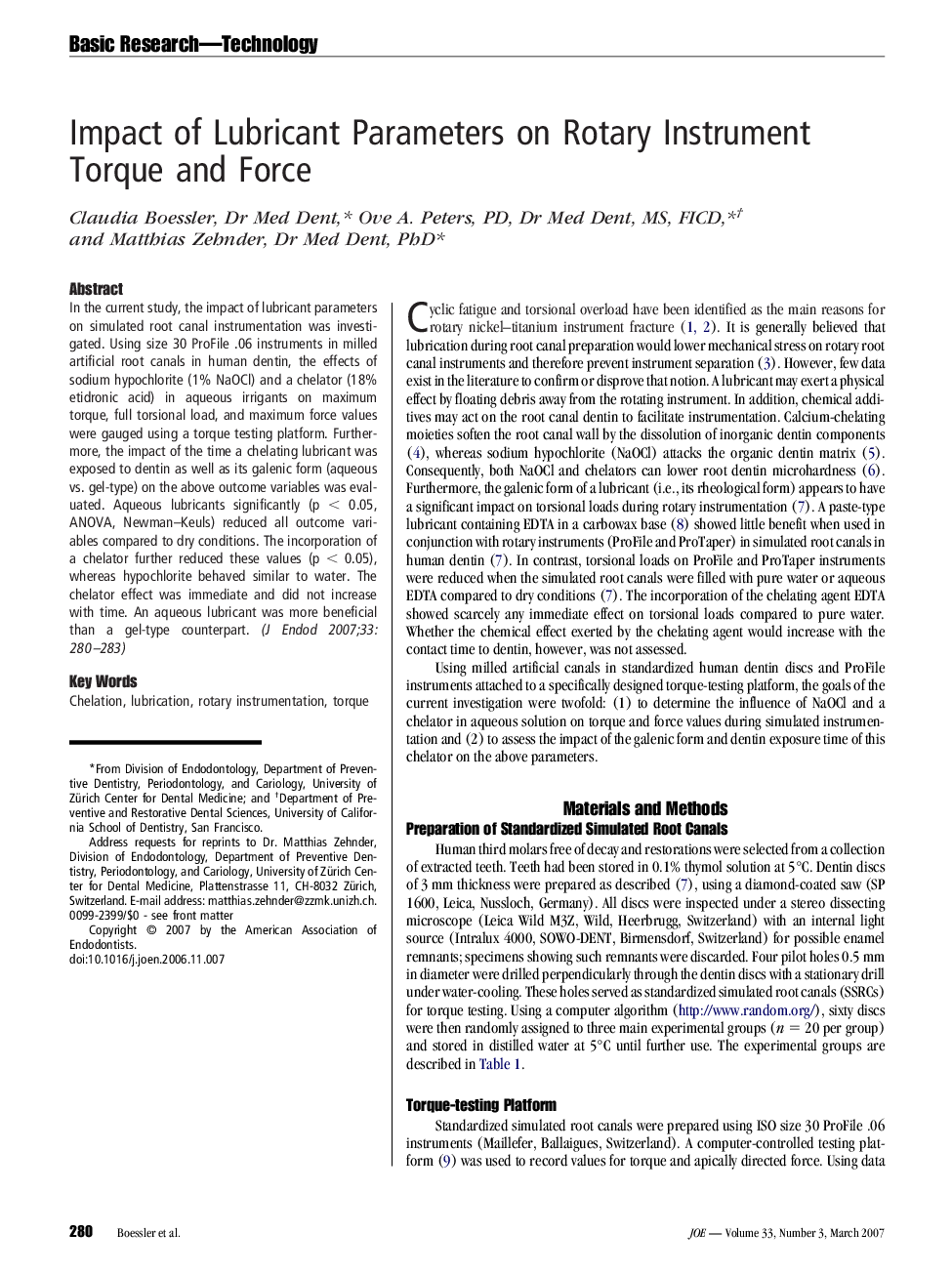| Article ID | Journal | Published Year | Pages | File Type |
|---|---|---|---|---|
| 3150103 | Journal of Endodontics | 2007 | 4 Pages |
In the current study, the impact of lubricant parameters on simulated root canal instrumentation was investigated. Using size 30 ProFile .06 instruments in milled artificial root canals in human dentin, the effects of sodium hypochlorite (1% NaOCl) and a chelator (18% etidronic acid) in aqueous irrigants on maximum torque, full torsional load, and maximum force values were gauged using a torque testing platform. Furthermore, the impact of the time a chelating lubricant was exposed to dentin as well as its galenic form (aqueous vs. gel-type) on the above outcome variables was evaluated. Aqueous lubricants significantly (p < 0.05, ANOVA, Newman–Keuls) reduced all outcome variables compared to dry conditions. The incorporation of a chelator further reduced these values (p < 0.05), whereas hypochlorite behaved similar to water. The chelator effect was immediate and did not increase with time. An aqueous lubricant was more beneficial than a gel-type counterpart.
